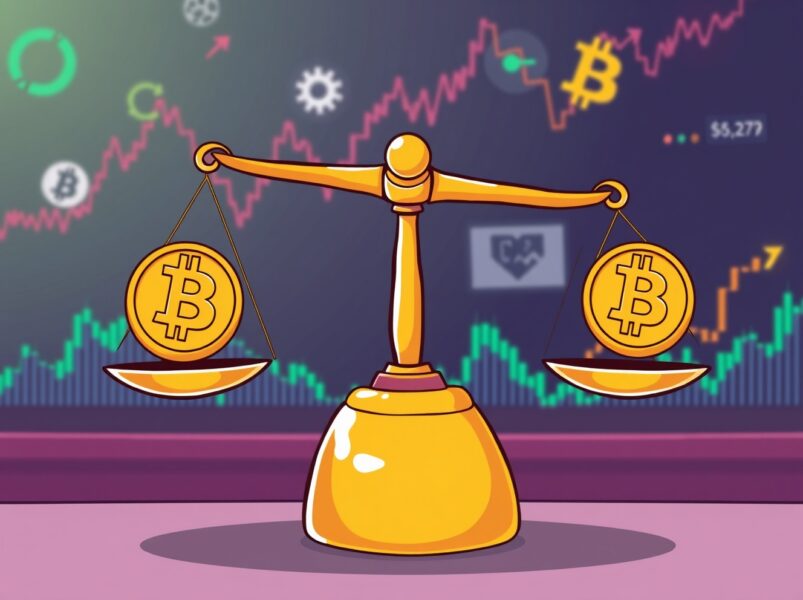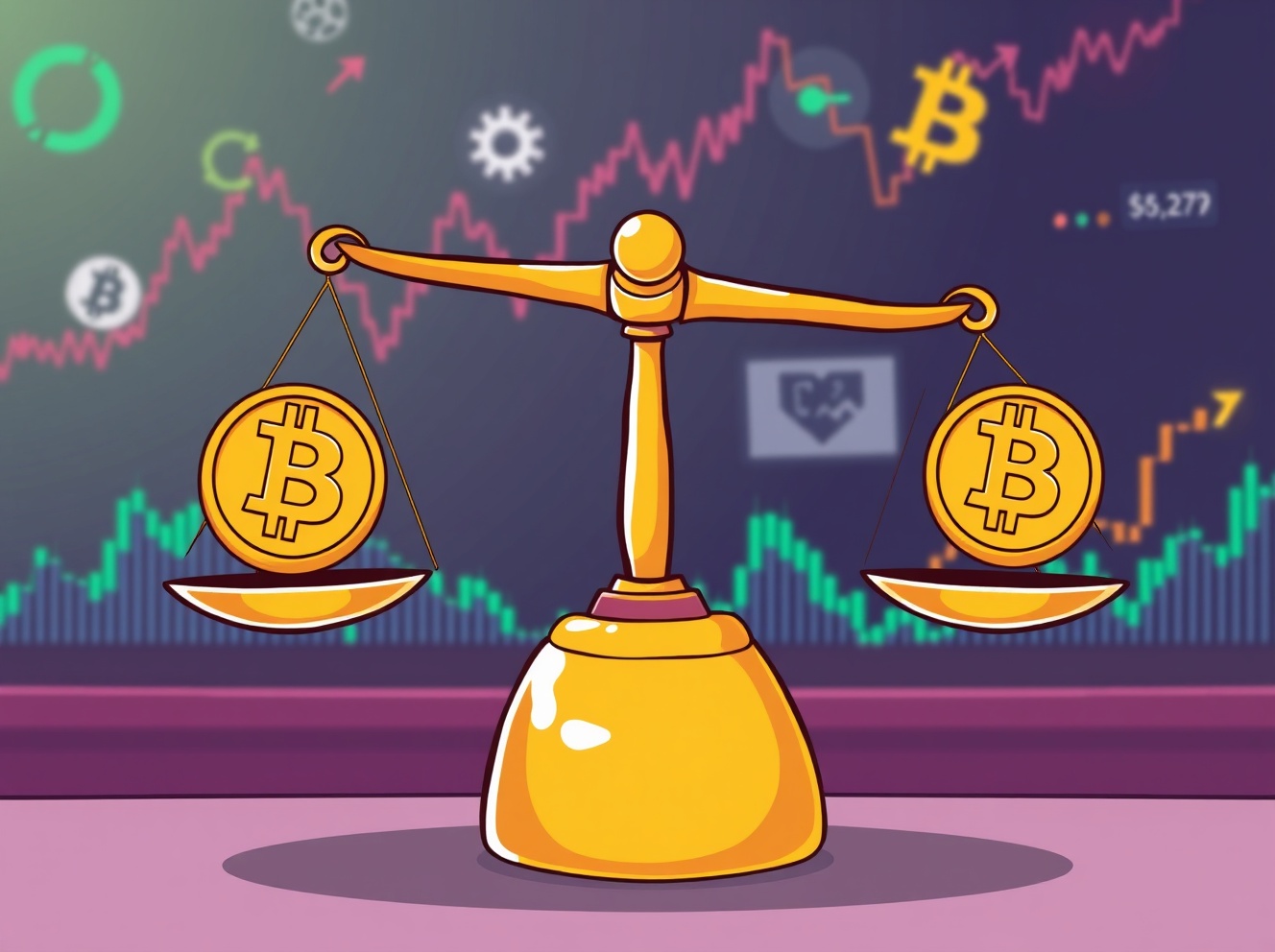BTC Perpetual Futures: Unveiling Crucial Long/Short Ratios for Strategic Trading
0
0

BitcoinWorld

BTC Perpetual Futures: Unveiling Crucial Long/Short Ratios for Strategic Trading
In the dynamic world of cryptocurrency, understanding market sentiment is paramount for making informed trading decisions. For many seasoned traders and enthusiasts, keeping a pulse on the BTC perpetual futures market provides invaluable insights into where Bitcoin might be headed next. This article dives into the current long/short position ratios on the world’s leading crypto futures exchanges, offering a transparent look at how traders are positioning themselves.
What Are BTC Perpetual Futures and Why Monitor Long/Short Ratios?
Before we dissect the numbers, let’s clarify what BTC perpetual futures are. Unlike traditional futures contracts with expiration dates, perpetual futures allow traders to hold positions indefinitely, as long as they meet margin requirements. This innovative instrument is a cornerstone of crypto trading, offering leverage and 24/7 market access.
The long/short ratio, specifically for BTC perpetual futures, is a powerful indicator. It represents the proportion of traders holding long positions (betting on price increase) versus those holding short positions (betting on price decrease). A higher long ratio suggests bullish sentiment, while a higher short ratio points to bearish sentiment. Monitoring these ratios helps traders gauge the collective mood of the market, which can often precede significant price movements.
A Current Snapshot of BTC Perpetual Futures Sentiment Across Top Exchanges
Over the last 24 hours, the long/short position ratios for BTC perpetual futures on the world’s top three crypto futures exchanges by open interest present an interesting picture. Let’s look at the data:
- Overall Market: 49.71% long / 50.29% short
- Binance: 49.27% long / 50.73% short
- Bybit: 49.67% long / 50.33% short
- Gate.io: 51.68% long / 48.32% short
This data reveals a slight overall bearish bias in the market, with more traders leaning towards short positions. However, it’s crucial to examine the individual exchange data for a more nuanced understanding of this complex market.
Decoding the Implications of These BTC Perpetual Futures Ratios
What can we infer from these specific numbers? The overall slight lean towards short positions suggests a cautious or mildly bearish sentiment among futures traders. Binance and Bybit, two major players, show a similar sentiment, with shorts slightly outweighing longs.
Interestingly, Gate.io stands out with a majority of long positions. This divergence could be due to various factors, including regional trading preferences, unique liquidity pools, or even different user bases. Traders often use these ratios as a potential contrarian indicator; if the majority is heavily long, some might consider it a signal for a potential downturn, and vice-versa. However, relying solely on this metric can be risky.
For strategic trading, understanding these ratios provides a piece of the puzzle. It can help confirm or challenge your existing market bias, prompting further investigation into other indicators like funding rates, open interest trends, and technical analysis patterns. Remember, the market is constantly evolving, and these ratios are snapshots in time.
Navigating the Complexities of BTC Perpetual Futures Trading
While long/short ratios offer valuable insights, successful trading in the BTC perpetual futures market requires a comprehensive approach. Benefits include the ability to profit from both rising and falling markets, as well as enhanced capital efficiency through leverage. However, these benefits come with significant challenges, primarily increased risk due to leverage and the inherent volatility of cryptocurrencies.
Therefore, it’s essential to integrate ratio analysis with a broader trading strategy. Consider the following:
- Funding Rates: Positive rates indicate longs paying shorts, suggesting bullishness; negative rates suggest the opposite.
- Open Interest: Rising open interest alongside price increases can confirm a trend; falling open interest might signal weakening momentum.
- Technical Analysis: Chart patterns, support/resistance levels, and moving averages provide context to market sentiment.
- Macro Factors: Broader economic news and regulatory developments can significantly impact Bitcoin’s price.
By combining these elements, traders can build a more robust understanding of market dynamics and make more informed decisions when engaging with BTC perpetual futures.
In conclusion, monitoring BTC perpetual futures long/short ratios on top exchanges offers a fascinating glimpse into immediate market sentiment. While the current data points to a slight bearish lean overall, the nuances across different platforms highlight the complex and multi-faceted nature of crypto trading. These ratios are a powerful tool for gauging collective trader positioning, but they are most effective when used as part of a comprehensive analytical framework. Stay informed, remain agile, and always combine various indicators to navigate the exciting world of Bitcoin futures trading successfully.
Frequently Asked Questions About BTC Perpetual Futures
What are BTC perpetual futures?
BTC perpetual futures are derivative contracts that allow traders to speculate on the future price of Bitcoin without an expiration date. They mimic spot market prices but offer leverage, meaning traders can control a larger position with a smaller amount of capital.
How do long/short ratios indicate market sentiment?
The long/short ratio compares the number of traders betting on a price increase (longs) against those betting on a price decrease (shorts). A higher percentage of longs suggests bullish sentiment, while a higher percentage of shorts indicates bearish sentiment. It reflects the prevailing mood among futures traders.
Which exchanges provide BTC perpetual futures data?
Major cryptocurrency exchanges offering perpetual futures trading, such as Binance, Bybit, and Gate.io, typically provide data on long/short ratios, funding rates, and open interest for their users and often for public consumption.
Can I rely solely on long/short ratios for trading decisions?
No, it is not advisable to rely solely on long/short ratios. While they offer valuable insights into market sentiment, they are just one indicator. Successful trading requires combining this data with other analytical tools like technical analysis, funding rates, open interest, and macroeconomic factors for a more holistic view.
What does it mean if the overall ratio is slightly more short than long?
If the overall ratio for BTC perpetual futures shows slightly more short positions than long, it suggests a cautious or mildly bearish sentiment among the collective futures traders. This implies that more participants are anticipating a potential price decline for Bitcoin in the near term.
Found these insights into BTC perpetual futures long/short ratios helpful? Share this article with your trading community and on social media to help others understand critical market sentiment indicators!
To learn more about the latest crypto market trends, explore our article on key developments shaping Bitcoin price action.
This post BTC Perpetual Futures: Unveiling Crucial Long/Short Ratios for Strategic Trading first appeared on BitcoinWorld.
0
0
 Manage all your crypto, NFT and DeFi from one place
Manage all your crypto, NFT and DeFi from one placeSecurely connect the portfolio you’re using to start.





